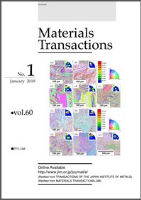
MATERIALS TRANSACTIONS
Scope & Guideline
Driving Discoveries in Advanced Material Applications
Introduction
Aims and Scopes
- Materials Fabrication and Processing:
The journal emphasizes innovative methods for the fabrication and processing of materials, including advanced techniques like additive manufacturing, laser processing, and severe plastic deformation. - Materials Characterization:
Research articles often focus on the characterization of materials at various scales, utilizing techniques such as electron microscopy, X-ray diffraction, and mechanical testing to understand their properties and behaviors. - Mechanical and Functional Properties:
A core area of publication is the investigation of mechanical properties, including strength, ductility, fatigue, and wear resistance, alongside functional properties related to electrical, thermal, and magnetic behaviors. - Materials for Energy Applications:
There is a significant focus on materials designed for energy applications, including thermoelectric materials, catalysts, and materials for batteries and fuel cells. - Corrosion and Environmental Resistance:
Research addressing the corrosion behavior of materials in various environments, including the development of coatings and treatments to enhance durability and performance.
Trending and Emerging
- High-Entropy Alloys (HEAs):
Research on high-entropy alloys has surged, showcasing their unique mechanical properties and potential applications in extreme environments, reflecting a growing interest in materials that can withstand harsh conditions. - Additive Manufacturing:
The exploration of additive manufacturing techniques continues to expand, with a focus on optimizing processes, material properties, and applications in aerospace, biomedical, and automotive industries. - Nanostructured Materials:
There is an increasing number of studies on nanostructured materials due to their enhanced properties, such as strength and electrical conductivity, which are critical for modern applications. - Machine Learning in Materials Science:
The integration of machine learning techniques for predicting material properties, optimizing processes, and accelerating material discovery is becoming a prominent theme, reflecting the industry's move towards data-driven research. - Corrosion Resistance Innovations:
Recent papers emphasize innovative approaches to enhance corrosion resistance, including advanced coatings and surface treatments, driven by the need for longevity in materials used in aggressive environments.
Declining or Waning
- Traditional Metal Alloys:
Papers focusing solely on conventional metal alloys without innovative applications or processing methods have become less prevalent, as the field shifts towards high-entropy alloys and advanced composites. - Basic Theoretical Models:
Research that emphasizes purely theoretical models without experimental validation has seen a decline, as there is a stronger demand for studies that integrate theory with practical applications. - Static Mechanical Testing:
While static mechanical testing remains important, there has been a noticeable decrease in papers that do not incorporate dynamic or real-world loading conditions, reflecting an industry need for more applicable results.
Similar Journals

Materiali in Tehnologije
Advancing the Future of Materials ScienceMateriali in Tehnologije is a distinguished peer-reviewed journal dedicated to the field of materials science, focusing specifically on metals and polymers. Published by the Institute for Metals and Materials Technology in Slovenia, this open-access journal has been at the forefront of disseminating research findings and innovative technologies since 2000. With a current impact factor that reflects its increasing visibility in the academic community, Materiali in Tehnologije serves as an invaluable resource for researchers, professionals, and students alike, encompassing a wide array of studies in the categories of Metals and Alloys, as well as Polymers and Plastics. The journal is indexed in Scopus, highlighting its relevance and contribution to the field, particularly with its ranks of Q3 in Metals and Alloys and Q4 in Polymers and Plastics. As it converges towards 2024, Materiali in Tehnologije continues to be a pivotal platform for knowledge exchange, encouraging advancements in materials research and technology.

JOURNAL OF ENGINEERING MATERIALS AND TECHNOLOGY-TRANSACTIONS OF THE ASME
Pioneering advancements in engineering materials and applications.JOURNAL OF ENGINEERING MATERIALS AND TECHNOLOGY-TRANSACTIONS OF THE ASME is a premier journal published by the American Society of Mechanical Engineers (ASME), dedicated to advancing the field of engineering materials and technology. With an ISSN of 0094-4289 and E-ISSN 1528-8889, this journal has provided invaluable insights since its inception in 1973. Operating from its headquarters in New York, United States, it serves a global audience of researchers, professionals, and students alike. The journal is recognized for its rigorous peer-review process and its commitment to disseminating high-quality research, currently holding a Q3 quartile ranking across multiple categories including Condensed Matter Physics, Materials Science, Mechanical Engineering, and Mechanics of Materials. With a focus on exploring innovative materials and their applications, it aims to foster collaboration and discovery in the engineering community. Although it is not an open-access journal, it continues to play a vital role in shaping the future of engineering materials research up to 2024. Researchers and practitioners will find in this journal a significant platform to support the development and understanding of engineering materials, making contributions that resonate through academia and industry.
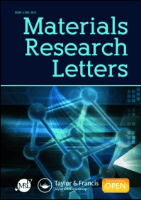
Materials Research Letters
Bridging Ideas and Innovations in Materials ResearchMaterials Research Letters, published by Taylor & Francis Inc., serves as a leading platform in the field of materials science, offering an open access format to enhance global research dissemination since 2013. With an impressive impact factor and ranking in the Q1 category for miscellaneous materials science, this journal ranks #57 out of 463 in the Scopus materials science categories, placing it within the 87th percentile among its peers. The journal aims to provide rapid publication of short communications that report on significant findings in all areas of materials research, thus fostering innovation and collaboration among scholars, professionals, and students alike. As a primary conduit for cutting-edge research and developments in materials science, Materials Research Letters is essential for those seeking to stay at the forefront of this dynamic field.

Journal of Metals Materials and Minerals
Connecting Researchers in Metals and Materials EngineeringJournal of Metals Materials and Minerals (ISSN: 0857-6149) is a renowned academic publication dedicated to the interdisciplinary fields of metallurgical science, materials engineering, and mineralogy. Published by Chulalongkorn University, Metallurgy & Materials Science Research Institute in Thailand, this journal serves as a pivotal platform for researchers to disseminate their findings and explore innovative applications related to metals, ceramics, polymers, and biomaterials. Although the journal does not currently adopt an open-access model, it provides insightful content that facilitates knowledge sharing among professionals and academics alike. The journal has established its credibility with impressive Scopus ranking percentiles, particularly in categories such as Metals and Alloys and Ceramics and Composites. With an emphasis on advancing the understanding of materials science from 2017 to 2024, the Journal of Metals Materials and Minerals remains an essential resource for those striving to contribute to and stay informed about the latest trends and breakthroughs in these dynamic fields.
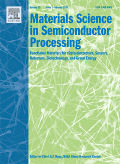
MATERIALS SCIENCE IN SEMICONDUCTOR PROCESSING
Transforming Knowledge into Cutting-Edge ApplicationsMATERIALS SCIENCE IN SEMICONDUCTOR PROCESSING, published by ELSEVIER SCI LTD, is a premier journal dedicated to advancing knowledge in the field of semiconductor processing, an area pivotal to the development of modern electronic applications. With an ISSN of 1369-8001 and an E-ISSN of 1873-4081, this journal exemplifies excellence with a remarkable standing in various disciplines, as indicated by its 2023 Scopus rankings—occupying the top quartile (Q1) in Condensed Matter Physics and Mechanical Engineering, and Q2 in Materials Science and Mechanics of Materials. The journal not only provides a platform for high-impact original research, reviews, and significant findings but also bridges theoretical and practical implications within the field. Operating under a publication timeline that extends from 1998 to 2025, it remains an essential resource for researchers, professionals, and students seeking to deepen their understanding of semiconductor materials and processes. Although not an open-access journal, it offers robust options for access, ensuring that cutting-edge developments are made available to the scholarly community.
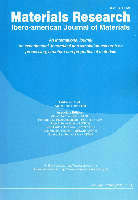
Materials Research-Ibero-american Journal of Materials
Empowering researchers with open access to cutting-edge insights.Materials Research-Ibero-american Journal of Materials, published by the UNIV FED SAO CARLOS, DEPT ENGENHARIA MATERIALS, is a prominent platform dedicated to advancing the field of materials science. Launched in 1998, this Open Access journal has fostered a culture of inclusive knowledge sharing, allowing researchers and practitioners worldwide to access valuable insights in Condensed Matter Physics, Materials Science, Mechanical Engineering, and Mechanics of Materials. With a commendable Q3 ranking in these diverse categories in 2023, the journal provides a vital resource that bridges theoretical research and practical applications in materials technology. Covering a range of topics from novel material characterization to innovative engineering solutions, Materials Research serves as a critical forum for contributors across the globe, particularly those in Latin America. Researchers, students, and professionals are encouraged to engage with this journal, which operates with a clear commitment to high standards and is based in São Carlos, Brazil, further enhancing its relevance and appeal within the international materials research community.
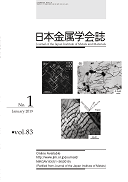
Journal of the Japan Institute of Metals and Materials
Fostering knowledge in metallurgy and engineering.Journal of the Japan Institute of Metals and Materials (ISSN: 0021-4876, E-ISSN: 1880-6880) serves as a vital academic platform under the esteemed auspices of the Japan Institute of Metals & Materials. This journal, with a rich publication history dating back to 1937, focuses on advancing knowledge in the fields of metallurgy, materials science, and engineering, making it an important resource for researchers, professionals, and students alike. Although the journal has been categorized in Q4 quartiles across several subject areas, including Condensed Matter Physics and Materials Chemistry, it plays a critical role in disseminating essential findings and fostering discussion regarding innovations in metal and materials research. Notably, the journal operates without open access, which encourages targeted readership engagement through its curated content. Based in Japan, it continues to contribute significantly to the academic community by bridging the gap between scientific inquiry and practical application in materials technology.
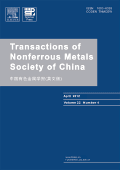
TRANSACTIONS OF NONFERROUS METALS SOCIETY OF CHINA
Advancing knowledge in nonferrous metals and materials science.TRANSACTIONS OF NONFERROUS METALS SOCIETY OF CHINA, published by Elsevier, is a premier academic journal that serves as a vital platform for researchers and professionals specializing in materials science, condensed matter physics, geotechnical engineering, and engineering geology. Established in 1994, this esteemed publication has maintained a robust focus on the latest developments in the nonferrous metals sector, reflecting its significant impact in the field with a Q1 categorization across multiple disciplines. With impressive Scopus rankings—placing it in the top 20% of journals in relevant categories—this journal is recognized for its quality and rigor, providing critical insights into metals and alloys, materials chemistry, and their applications. The non-open access format ensures a dedicated readership among professionals and academics seeking substantial and authoritative research articles. By fostering knowledge exchange, the journal strives to advance the understanding and application of nonferrous metals, making it an essential resource for anyone involved in material innovations and engineering solutions.
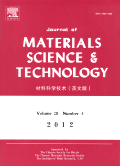
Journal of Materials Science & Technology
Connecting Researchers in the World of Materials TechnologyThe Journal of Materials Science & Technology, published by JOURNAL MATER SCI TECHNOL in China, is a leading forum for the latest research in the multidisciplinary field of materials science. With the ISSN 1005-0302 and E-ISSN 1941-1162, this esteemed journal boasts an impressive impact factor and has established itself as a vital resource for professionals, researchers, and students alike. Covering a wide range of topics, including ceramics, composites, materials chemistry, mechanical engineering, and polymers, it has achieved a coveted Q1 ranking in multiple categories as of 2023, reflecting its position in the top tier of scholarly publications. Notably, the journal excels in its Scopus ranks, placing within the top 5% in categories such as Metals and Alloys and Mechanical Engineering. Aiming to foster knowledge and innovation in material development and application, the journal is committed to facilitating groundbreaking research and collaborations that propel the field forward. With its convergence of insights from 1993 to 2025, the Journal of Materials Science & Technology remains an indispensable resource for the advancement of materials science.
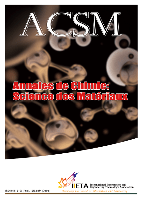
ANNALES DE CHIMIE-SCIENCE DES MATERIAUX
Fostering Insightful Dialogues in Material ScienceANNALES DE CHIMIE-SCIENCE DES MATERIAUX, published by the International Information & Engineering Technology Association, serves as a significant resource in the field of materials chemistry. With an ISSN of 0151-9107 and an E-ISSN of 1958-5934, this journal has been contributing to the scientific discourse since its inception in 1947. The journal is classified in the Q3 category for Materials Chemistry in 2023, positioning it within the 29th percentile in the Scopus ranking for materials science, underscoring its commitment to advancing knowledge and innovation in this vital area of research. Although currently not an open access publication, the journal welcomes submissions that explore a broad range of topics related to material science, thereby facilitating discussions that can lead to groundbreaking discoveries. Researchers, professionals, and students are encouraged to engage with the journal to stay at the forefront of materials chemistry, especially given its historical context and ongoing relevance in academic and industrial applications.